Stern’sIntroductoryPlantBiology13thEdition–EbookPDFVersion

https://ebookmass.com/product/sterns-introductory-plantbiology-13th-edition-ebook-pdf-version/
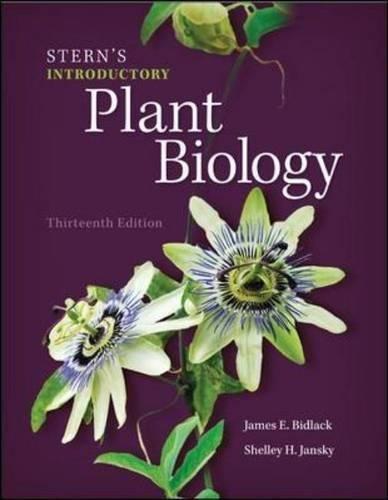

Stern’sIntroductoryPlantBiology13thEdition–EbookPDFVersion

https://ebookmass.com/product/sterns-introductory-plantbiology-13th-edition-ebook-pdf-version/

https://ebookmass.com/product/fitness-for-work-the-medical-aspectshobson/
ebookmass.com

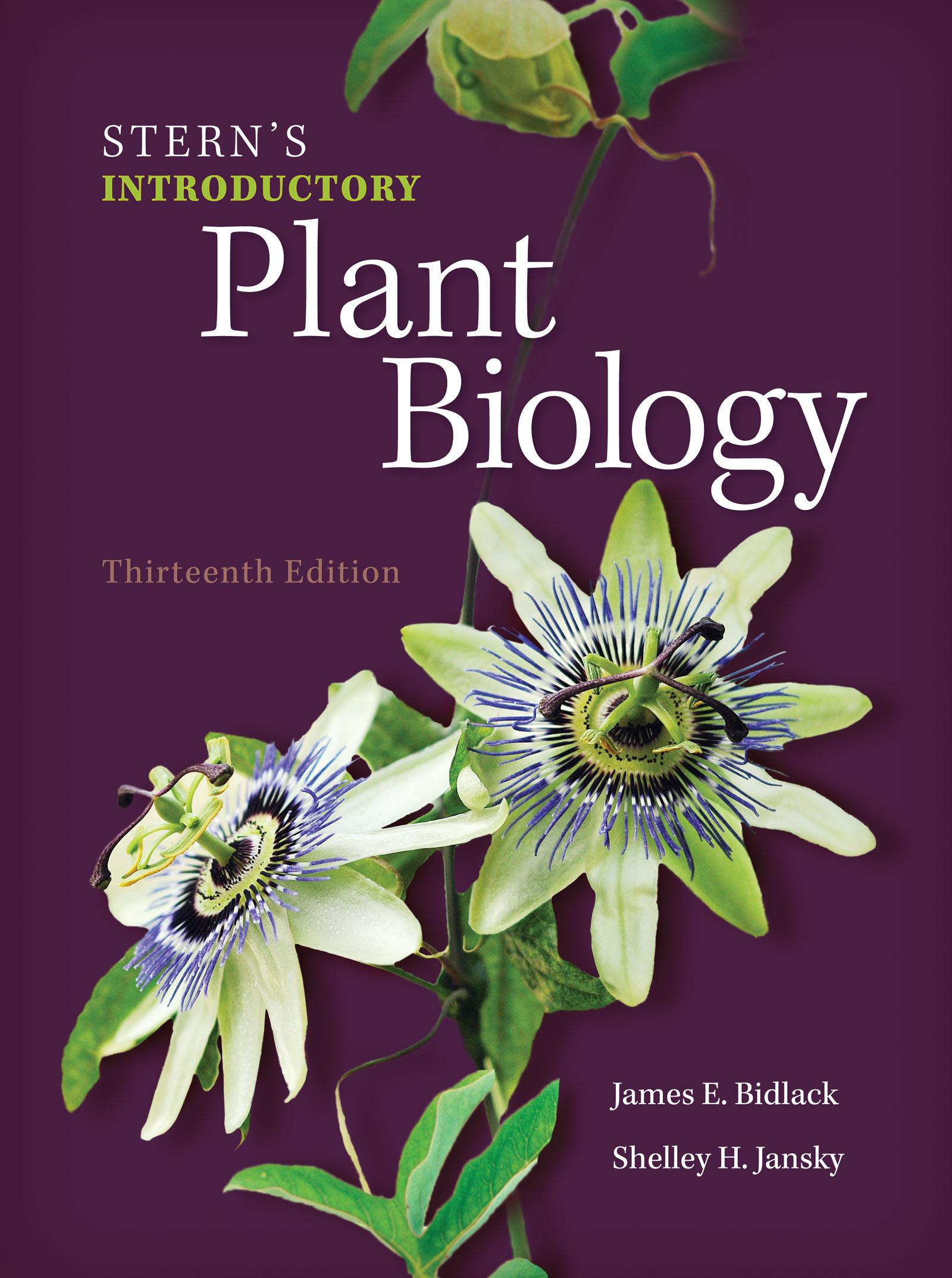




Introductory Plant Biology was originally written by Kingsley R. Stern (1927–2006), who spent over 40 years as a devoted botanist and teacher. It is estimated that Dr. Stern educated 15,000 students through classroom/laboratory teaching and inspired thousands of botanists as the author of this book, which has sold over 250,000 copies since the first edition was published in 1979. Kingsley’s enthusiasm for the botanical world captivated those around him for many decades. He will long be remembered for his attention to detail and dedication to high standards, along with a refreshing sense of humor. It has always been Kingsley’s aspiration that those who read Stern’s Introductory Plant Biology will share his lifelong love of botany.
In late 1999/early 2000, Drs. Jim Bidlack and Shelley Jansky joined Kingsley Stern in editing and updating this textbook. They worked with Dr. Stern on several editions and have since carried his legacy forward to educate and inspire young botanists. This thirteenth edition reflects the same accuracy, content, and enthusiasm of the Stern writing style, along with revisions and updates to make it an up-to-date and enjoyable resource and textbook for plant biology.

Jim Bidlack received a B.S. Degree in Agronomy, with a Soil & Crop Option, from Purdue University in 1984 and continued his education with a Master’s Degree in Crop Physiology at the University of Arkansas in 1986. Upon completing a Ph.D. in Plant Physiology at Iowa State University in 1990, Jim joined the teaching faculty at the University of Central Oklahoma (UCO) where he is a Professor of Biology. His first paper was published from undergraduate research at Purdue University on the use of synthetic growth regulators to stimulate seed germination. Subsequent work at Arkansas, Iowa, and Oklahoma focused on soybean physiology, cell wall chemistry, and alternative crops, as well as teaching responsibilities in plant biology. Equipment and student salaries for Jim’s research projects have been funded by grants from the National Science Foundation (NSF) and the United States Department of Agriculture (USDA). Nearly 20 refereed publications, as well as 50 abstracts and popular articles, have resulted from this work. Jim has been recognized with UCO’s Presidential Partner’s Excellence in Teaching Award; University Merit Awards in Service, Research, and Teaching; as well as the Biology Club and the Pre-Med Teaching Awards. Some of Jim’s additional responsibilities have included participation on NSF and USDA Review Panels, Editor of the Biology Discipline for the Multimedia Educational Resource for Learning and Online Teaching (MERLOT), and President of Metabolism Foundation.

Shelley Jansky received a Bachelor’s Degree in Biology from the University of Wisconsin–Stevens Point in 1982, and M.S. and Ph.D. degrees in Plant Breeding and Plant Genetics from the University of Wisconsin–Madison in 1984 and 1986, respectively. Her graduate work focused on developing methods to incorporate genes from wild relatives of potato into the cultivated potato. Then, she spent four years as an Assistant Professor at North Dakota State University, teaching courses in plant breeding and plant propagation, and performing research in the potato breeding program. She taught courses in botany, genetics, and horticulture, and continued to perform potato genetics research at the University of Wisconsin–Stevens Point from 1990 until 2004. She was the Chair of the Department of Biology and was promoted to Associate Professor in 1992 and Professor in 1995. In 2004, she accepted a position as a Research Geneticist with the U.S. Department of Agriculture and an Assistant Professor in the Department of Horticulture at the University of Wisconsin–Madison. Her potato research program focuses on the utilization of disease resistance and nutritional quality genes from wild potato relatives for the improvement of cultivated potato varieties. She received the University of Wisconsin–Stevens Point Excellence in Teaching Award in 1992 and the University Scholar Award in 2000. She has published 65 refereed research articles and five book chapters.


Plants and algae are essential for life on earth as it exists today. They provide our world with oxygen and food, contribute an essential part of water and nutrient cycling in ecosystems, provide clothing and shelter, and add beauty to our environment. Some scientists believe that if photosynthetic organisms exist on planets beyond our solar system, it would be possible to sustain other forms of life that depend upon them to survive.
Plants and are essential for life on earth as it exists our world with oxygen and food, contribute an
Botany today plays a special role in many interests of both major and nonmajor students. For example, in this text, topics such as global warming, ozone layer depletion, acid rain, genetic engineering, organic gardening, Native American and pioneer uses of plants, pollution and recycling, house plants, backyard vegetable gardening, natural dye plants, poisonous and hallucinogenic plants, nutritional values of edible plants, and many other topics are discussed. To intelligently pursue such topics, one needs to understand how plants are constructed, and how they function. To this end, the text assumes little prior knowledge of the sciences on the part of the student, but covers basic botany, without excessively resorting to technical terms. The coverage, however, includes sufficient depth to prepare students to go further in the field, should they choose to do so.
The text is arranged so that certain sections can be omitted in shorter courses. Such sections may include topics such as soils, molecular genetics, and phylum Bryophyta. Because botany instructors vary greatly in their opinions about the depth of coverage needed for photosynthesis and respiration in an introductory botany course open to both majors and nonmajors, these topics are presented at three different levels. Some instructors will find one or two levels sufficient, whereas others will want to include all three.
Both majors in botany and nonmajors who may initially be disinterested in the subject matter of a required course frequently become engrossed if the material is related repeatedly to their popular interests. This is reflected, as intimated above, in the considerable amount of ecology and ethnobotany included with traditional botany throughout the book.
A relatively conventional sequence of botanical subjects is followed. Chapters 1 and 2 cover introductory and background information; Chapters 3 through 11 deal with structure and function; Chapters 12 and 13 introduce meiosis, genetics, and molecular biology. Chapter 14 discusses plant propagation and biotechnology; Chapter 15 introduces evolution; Chapter 16 deals with classification; Chapters 17 through 23 stress, in phylogenetic sequence, the diversity of organisms traditionally regarded as plants; and Chapter 24 deals with ethnobotanical
aspectts and d t othher in i fo f rmatio i n of to plant of and

aspects and other information of general interest pertaining to 16 major plant families or groups of families. Chapters 25 and 26 present an overview of the vast topic of ecology, although ecological topics and applied botany are included in the preceding chapters as well. Some of these topics are broached in anecdotes that introduce the chapters, while others are mentioned in text boxes as well as the appendices.
A chapter outline, review questions, discussion questions, and additional reading lists are provided for each chapter. New terms are defined as they are introduced, and those that are boldfaced are included, with their pronunciation, in a glossary. A list of the scientific names of all organisms mentioned throughout the text is given in Appendix 1. Appendix 2 deals with biological controls and companion planting. Appendix 3 includes wild edible plants, poisonous plants, medicinal plants, hallucinogenic plants, spices, tropical fruits, and natural dye plants. Appendix 4 gives horticultural information on house plants, along with brief discussions on how to cultivate vegetables. Nutritional values of the vegetables are included. Appendix 5 covers metric equivalents and conversion tables.
The thirteenth edition has retained the hallmark style and pedagogy that have made it one of the most enduring and popular introductory plant biology books on the market. At the same time, this edition has undergone many changes to expand upon, revise, and update topics in plant biology. All chapters now incorporate measurable learning outcomes and updated additional readings. For those instructors using Connect Botany, all learning outcomes (LOs) are directly tied to assessment within the question and test banks. In addition, most of the chapters include revisions and updates as suggested by reviewers. Some of the major changes include an introduction to the new classification of plants and plant-related species, integration of biotechnology into several chapters, and inclusion of new featured text boxes addressing key themes of ecology, evolution, and molecular biology throughout the text. These new text boxes provide instructors and students with information that helps them to understand how modern botany affects our everyday lives. Many new photographs have replaced some of the older pictures or have been added within individual chapters. Some of the more interesting components that make this 13th Edition more accurate and up-to-date with our current understanding of plant biology include:
Chapter 1 (What is Plant Biology?): New information on climate change, population dynamics, and alternative energy has been added to many parts of the chapter to make it more engaging and up-to-date. Text boxes on “Who Needs Plants?” as well as “Biology and the Internet” have been extensively re-written and several photographs have been replaced.
Chapter 2 (The Nature of Life): Figures on energy conversion and enzyme action have been replaced to improve accuracy, and a new text box entitled “The Skinny on Fats” has been added.
Chapter 3 (Cells): Many of the figures have been revised; particularly the cell and its components to more accurately represent how these are seen under a microscope. New, modern photographs of microscopes have been added along with a better explanation of confocal electron microscopy. Updated text information now includes discussion of endosymbiotic theory as well as functions of vacuoles.
Chapter 4 (Tissues): The text box on “Chimeras and Variegated Leaves” has been modified to provide more detail. New information has been added on discussion of cell wall thickening in collenchyma cells and tracheary elements, and an improved depiction of lenticels is now shown in the section on periderm.
Chapter 5 (Roots and Soils): Improved photographs of sweet potatoes, cassava, and a soil profile have been incorporated into the chapter. The text has been modified to provide a more accurate description of Casparian strips, lateral root formation, and soil horizons. The sections on parasitic roots and mycorrhizae have been extensively re-written to incorporate new terminology for these topics.
Chapter 6 (Stems): Artwork showing heartwood and softwood has been replaced to show a better representation of the characteristics and location of these parts of woody stems. The section on wood and its uses has been extensively modified so that the figures are better organized and figure legends are easier to read.
Chapter 7 (Leaves): Photographs of thorns and prickles, as well as some modified leaves, have been replaced to show better depiction of these structures.
Chapter 8 (Flowers, Fruits, and Seeds): A photograph of a rare Australian orchid, as well as a more clearly-displayed specimen of Rafflesia have been added to the chapter. A new text box on “Goober Peas” has been incorporated into text, along with a more accurate description of germination.
Chapter 9 (Water in Plants): A sharper opening photograph for the chapter has been added along with more refined artwork to show diffusion and the pressure-flow hypothesis. The section on water potential has been extensively rewritten and a new text box on “Measuring Water Potential and Psychrometry” has been added to the chapter.
Chapter 10 (Plant Metabolism): Artwork has been revised to show a better summary of photosynthesis and respiration, and more details in the Calvin cycle. A new text box has been added on “Photosynthesis, Global Warming, and Tropical Rain Forests” to show applications of metabolic concepts.
Chapter 11 (Growth and Development): New figures have been incorporated to show structures of plant hormones as well as signal transduction and a new text box entitled,
“Plant Hormones—Beyond the Classic Five,” has been added. Updated information has also been added about auxintryptophan interactions, the role of ethylene in fruit ripening, photoreceptor proteins, and the flowering locus T gene.
Chapter 12 (Meiosis and Alternation of Generations): Descriptions of meiotic phases have been revised to be more accurate, along with new discussions of chiasma and polyploidy. Two new text boxes on “Why Plants Have a Sex Life” and “FISH and GISH Molecular Techniques” have been added.
Chapter 13 (Genetics and Molecular Biology): A new textbox has been added on “Massive DNA Sequencing,” along with an improved image of Gregor Mendel.
Chapter 14 (Plant Breeding, Propagation, and Biotechnology): Updated images have been incorporated to provide better explanations of transgenics, plant propagation, and tissue culture. New text has been added to describe the development of golden rice.
Chapter 15 (Evolution): Several parts of this chapter have been revised and updated to include discussions on epigenesis and polyploidy. A new text box on “Our Daily Bread” has been added to describe the domestication of wheat.
Chapter 16 (Plant Names and Classification): This chapter has been extensively rewritten to describe modern classification techniques. Sections on the International Code of Nomenclature of Cultivated Plants and the Phylocode have been added, along with a newly-proposed classification key. Chapter 17 (Domain (Kingdom) Bacteria, Domain (Kingdom) Archaea, and Viruses): New, three-dimensional depictions of bacteria have been incorporated into the chapter along with improved artistic representations of viruses. A discussion of Clostridium difficile, has been added, as well as a new text box entitled “The Social Life of Prokaryotes.”
Chapter 18 (Kingdom Protista): Improved images of red algae, Euglena, and dinoflagellates have been incorporated to show more accurate depictions of these specimens.
Chapter 19 (Kingdom Fungi): The use of DNA sequence data for classification of fungi is described. New information is also introduced, including use of fungi in cleaning oil spills and treatment of certain tree species to prevent the spread of disease.
Chapter 20 (Introduction to the Plant Kingdom: Bryophytes): New introductory information has been added on the evolutionary origin of plants, along with a summary of bryophyte classification. Artwork for hornworts has been improved and new pictures of hairy cap moss and peat moss have been added to the chapter.
Chapter 21 (The Seedless Vascular Plants: Ferns and Their Relatives): Improved photographs of ferns have been incorporated into the text, along with new evolutionary information about the origin of seedless vascular plants. In addition, a new text box on “Ferns and Fossil Fuels” has been added to the chapter.
Chapter 22 (Introduction to Seed Plants: Gymnosperms): A new photograph of the rare Wollemi pine, along with a more modern photograph of a newsprint factory have been added to the text. The introductory paragraph has been updated with new information about molecular analysis of gymnosperms as well as a summary of their current classification. A text box
Patricia M. Dooris, Saint Leo College
Donald Drake, University of Hawaii
Tom Dudley, Angelina College
Jan Federic Dudt, Bartlesville Wesleyan College
Diane Dudzinski, Washington State Community College
Kerry B. Dunbar, Dalton State College
Carolyn S. Dunn, University of North Carolina–Wilmington
Robert Ediger, California State University–Chico
H. Herbert Edwards, Western Illinois University
William Eisinger, Santa Clara University
Inge Eley, Hudson Valley Community College
Thomas E. Elthon, University of Nebraska–Lincoln
Frederick B. Essig, University of South Florida
G. F. Estabrook, The University of Michigan
James Ethridge, Joliet Junior College
Paul G. Fader, Freed-Hardeman University
Bruce Felgenhauer, University of Louisiana–Lafayette
Jorge F. S. Ferreira, Southern Illinois University–Carbondale
David G. Fisher, Maharishi University of Management
Rosemary H. Ford, Washington College
Stephen W. Fuller, Mary Washington College
James Garner, Horry-Georgetown Technical College
Sibdas Ghosh, University of Wisconsin–Whitewater
Mike Gipson, Oklahoma Christian University
Katherine Glew, University of Washington
Richard Glick, Winston-Salem State University
Charles Good, Ohio State University
David L. Gorchov, Miami University of Ohio
Scott A. Gordon, University of Southern Illinois
Govindjee, University of Illinois
Steve Greenwald, Gordon College
Sharon Gusky, Northwestern Connecticut Community Technical College
Timothy C. Hall, Texas A & M University
Mark Hammer, Wayne State College
Susan Han, University of Massachusetts
Laszlo Hanzely, Northern Illinois University
Joyce Phillips Hardy, Chadron State College
Nancy E. Harris, Elon College
David Hartsell, Phillips Community College
Jill F. Haukos, South Plains College
David L. Herrin, University of Texas–Austin
Peter Heywood, Brown University
Jeffrey P. Hill, Idaho State University
L. Michael Hill, Bridgewater College
H. H. Ho, State University of New York–New Paltz
A. Scott Holaday, Texas Tech University
Elisabeth A. Hooper, Truman State University
Susan Houseman, Southeastern Community College
Lauren D. Howard, Norwich University
Vernon R. Huebschwerlen, Reedley Community College
Patricia L. Ireland, San Jacinto College, South
William A. Jensen, Ohio State University
Cindy Johnson-Groh, Gustavus Adolphus College
Chad Jordan, North Carolina State University
Toney Keeney, Southwest Texas State
Sekender A. Khan, Elizabeth City State University
Joanne M. Kilpatrick, Auburn University–Montgomery
Helen G. Kiss, Miami University
John Z. Kiss, Miami University of Ohio
Kaoru Kitajima, University of Florida
Sharon Klavins, University of Wisconsin–Platteville
Roger C. Klockziem, Martin Luther College
Robert L. Koenig, Southwest Texas Junior College
David W. Kramer, Ohio State University–Mansfield
Robert N. Kruger, Mayville State University
Martin LaBar, Southern Wesleyan University
Vic Landrum, Washburn University
James M. Lang, Greenville College
Brenda Price Latham, Merced College
Cheryl R. Laursen, Eastern Illinois University
Peter J. Lemay, College of the Holy Cross
Donald C. Leynaud, Wabash Valley College
Barbara E. Liedl, Central College
John F. Logue, University of South Carolina–Sumter
Elizabeth L. Lucyszyn, Medaille College
Karen Lustig, Harper College
Erin D. MacKenzie, Weatherford College
Paul Mangum, Midland College
Steve Manning, Arkansas State University–Beebe
Michael H. Marcovitz, Midland Lutheran College
Bernard A. Marcus, Genesee Community College
David Martin, Centralia College
Margaret Massey, Mississippi University for Women
William J. Mathena, Kaskaskia College
Alicia Mazari-Andersen, Kwantlen University College
Andrew McCubbin, Washington State University
Joseph H. McCulloch, Normandale Community College
Julie A. Medlin, Northwestern Michigan College
Larry Mellichamp, University of North Carolina at Charlotte
Richard G. Merritt, Houston Community College
Andrew S. Methven, Eastern Illinois University
Timothy Metz, Campbell University
David H. Miller, Oberlin College
David W. Miller, Clark State Community College
Lillian W. Miller, Florida Community College–Jacksonville
Subhash C. Minocha, University of New Hampshire
L. Maynard Moe, California State University–Bakersfield
Beth Morgan, University of Illinois, Urbana-Champaign
Dale M. J. Mueller, Texas A & M University
Lytton John Musselman, Old Dominion University
Nusrat H. Naqvi, Southern University
Joanna H. Norris, University of Rhode Island
Chuks A. Ogbonnaya, Mountain Empire College
Jeanette C. Oliver, Flathead Valley Community College
Sebastine O. Onwuka, Lesley College
Clark L. Ovrebo, University of Central Oklahoma
A. D. Owings, Southeastern Louisiana University
Julie M. Palmer, University of Texas–Austin
Richard A. Palmer, Fresno City College
Carolyn Peters, Spoon River College
Martha M. Phillips, The College of St. Catherine
Jerry L. Pickering, Indiana University of Pennsylvania
Wayne S. Pierce, California State University–Stanislaus
Indiren Pillay, Southwestern Tennessee Community College
Mary Ann Polasek, Cardinal Stritch University
Dr. Robert J. Porra, CSIRO
Kumkum Prabhakar, Nassau Community College
Tyre J. Proffer, Kent State University
Francis Putz, University of Florida
V. Raghaven, The Ohio State University
Mohammad A. Rana, St. Joseph College
Margene M. Ranieri, Bob Jones University
W. T. Rankin, University of Montevallo
Dennis T. Ray, University of Arizona
Linda Mary Reeves, San Juan College
Maralyn A. Renner, College of the Redwoods
Penelope ReVelle, Community College of Baltimore County–Essex
Tom Reynolds, University of North Carolina–Charlotte
Stanley A. Rice, Southeastern Oklahoma State University
Dennis F. Ringling, Pennsylvania College of Technology
Daryl Ritter, Okaloosa-Walton Community College
Suzanne M. D. Rogers, Salem International University
Wayne C. Rosing, Middle Tennessee State University
Robert G. Ross, University of Puerto Rico
Jimmy Rozell, Tyler Junior College
Manfred Ruddat, University of Chicago
Patricia Rugaber, Coastal Georgia Community College
Frances Rundlett, Georgia State University
Robert M. Rupp, Ohio State University, Agricultural Technical Institute
Thomas H. Russ, Charles County Community College
Dennis J. Russell, University of Alaska Southeast
Connie Rye, Bevill State Community College
C. L. Sagers, University of Arkansas
A. Edwards Salgado, Christian Brothers University
Thomas Sasek, Northeast Louisiana University
Michael A. Savka, University of West Florida
Neil W. Sawyer, University of Wisconsin–Whitewater
Neil Schanker, College of the Siskiyous
Renee M. Schloupt, Delaware Valley College
Bruce S. Serlin, DePauw University
Wilbur J. Settle, State University of New York–Oneonta
Barbara Greene Shipes, Hampton University
Richard H. Shippee, Vincennes University
Brian R. Shmaefsky, Kingwood College
Shaukat M. Siddiqi, Virginia State University
Dilbagh Singh, Blackburn College
Del William Smith, Modesto Junior College
James Smith, Boise State University
Joanna M. K. Smith
Steven Smith, University of Arizona
Nancy Smith-Huerta, Miami University
F. Lee St. John, Ohio State University–Newark
Spencer S. Stober, Alvernia College
Marshall D. Sundberg, Emporia State University
Eric Sundell, University of Arkansas–Monticello
Donald D. Sutton, California State University–Fullerton
Stan R. Szarek, Arizona State University
Mesfin Tadesse, Ohio State University
Max R. Terman, Tabor College
R. Dale Thomas, Northeast Louisiana University
Stephen L. Timme, Pittsburgh State University
Leslie R. Towill, Arizona State University
Richard E. Trout, Oklahoma City Community College
Jun Tsuji, Sienna Heights College
Claudia Uhde-Stone, California State University–East Bay
Gordon E. Uno, University of Oklahoma
Rani Vajravelu, University of Central Florida
John Vanderploeg, Ferris State University
Staria Vanderpool, Arkansas State University
Delmar Vander Zee, Dordt College
C. Gerald Van Dyke, North Carolina State University
Carol Wake, South Dakota State University
Leon Walker, University of Findlay
Ami Lea Wangeline, Colorado State University
Betty J. Washington, Albany State University
Edgar E. Webber, Keuka College
Christopher R. Wenzel, Eastern Wyoming College
Cherie Wetzel, City College of San Francisco
Ingelia White, Windward Community College
Garrison Wilkes, University of Massachusetts–Boston
Donald L. Williams, Sterling College
Justin K. Williams, Sam Houston State University
Marvin Williams, University of Nebraska–Kearney
Dwina W. Willis, Freed-Hardeman University
James A. Winsor, The Pennsylvania State University
Clarence C. Wolfe, Northern Virginia Community College
Chris Wolverton, Ohio Wesleyan University
Kathleen Wood, University of Mary Hardin-Baylor
Richard J. Wright, Valencia Community College
Todd Christian Yetter, Cumberland College
Brenda Young, Daemen College
Rebecca Zamora, South Plains College
McGraw-Hill Connect® Botany is a web-based assignment and assessment platform that gives students the means to better connect with their coursework, with their instructors, and with the important concepts that they will need to know for success now and in the future.
With McGraw-Hill Connect Botany, instructors can deliver interactive assignments, quizzes and tests online. Nearly all the questions from the text are presented in an
• PowerPoint Lecture Outlines Ready-made presentations that combine art, photos, and lecture notes are provided for each of the 26 chapters of the text. These outlines can be used as they are, or tailored to reflect your preferred lecture topics and sequences.
• PowerPoint Figure Slides For instructors who prefer to create their lectures from scratch, all illustrations, photos, and tables are preinserted by chapter into blank PowerPoint slides for your convenience.
The test bank contains a variety of questions. This computerized test bank uses testing software to quickly create customized exams, and is available on the text website. The user-friendly program allows instructors to search for questions by topic or format, edit existing questions or add new ones; and scramble questions for multiple versions of the same test. Word files of the test bank questions are provided for those instructors who prefer to work outside test generator software.
Licensed from some of the highest-quality life science video producers in the world, these brief video clips on DVD range in length from 15 seconds to two minutes and cover all areas of general biology, from cells to ecosystems. Engaging and informative, McGraw-Hill’s digitized biology videos will help capture students’ interest while illustrating key biological concepts, applications, and processes.
The Amazing Lives of Plants: The Reproductive Lives of Mosses, Pines, Ferns, Flowers, and Leaves CD-ROM OR DVD
(CD ISBN: 978-0-07294047-3; CD MHID: 0-07-2940476)
(DVD ISBN: 978-0-07-294339-9; DVD MHID: 0-07-294339-4)
Available upon adoption, The Amazing Lives of Plants includes five independent segments: “Mosses,” “Ferns,” “Pines,” “Flowers,” and “Leaves.” Their reproductive lives are presented in a vivid full-color combination of live video footage and sharp animation. Subtitled text makes it easy to cue up for use in lecture, and the pace of the program is suitable for students taking notes.
(ISBN: 978-0-07-7508784
MHID: 0-07-7508785)
The laboratory manual that accompanies Stern’s Introductory Plant Biology has been revised and updated. It is written for the student who is entering the study of botany. The exercises utilize plants to introduce biological principles and the scientific method. They are written to allow for maximum flexibility in sequencing.


Overview
Learning Outcomes
The Relationship of Humans to Their Environment
ECOLOGY: Who Needs Plants?
Human and Animal Dependence on Plants
Botany as a Science Hypotheses
Diversification of Plant Study
GENERAL: Plant Biology and the Internet
SUMMARY
REVIEW QUESTIONS
DISCUSSION QUESTIONS
ADDITIONAL READING
LEARNING ONLINE

50% of all the species of living organisms; it is estimated that 137 species are destroyed every day due to rain-forest deforestation. What will be the long-term impacts of these activities, and can they be reversed?
There is no doubt that our climate is changing. There is much debate, though, about the effects that global warming will have on life as we know it. Are those who proclaim that global warming will eventually have disastrous effects on modern civilization and living organisms simply exaggerating, or is there a scientific basis for the claims? Plant life constitutes more than 98% of the total biomass (collective dry weight of living organisms) of the earth. Plants and other green organisms have the exclusive capacity to produce oxygen while converting the sun’s energy into forms vital to the existence of both plant and animal life. At the same time, plants remove the large amounts of carbon dioxide given off by all living organisms as they respire. In other words, virtually all living organisms are totally dependent on green organisms for their existence. If some major disease were to kill off all or most of the green organisms on land and in the oceans and lakes, all the animals on land, in the sea, and in the air would soon starve. Even if some alternative source of energy were available, animal life would suffocate within 11 years—the time estimated for all the earth’s oxygen to be completely used up if it were not replaced. Just how do green plants capture the sun’s energy, use carbon dioxide, and give off oxygen?
This book tries to answer these and other questions about living organisms—particularly those pertaining to plants, algae, fungi, and bacteria. Moreover, additional information about plant biology related to future societies, conservation, and human benefits is discussed.
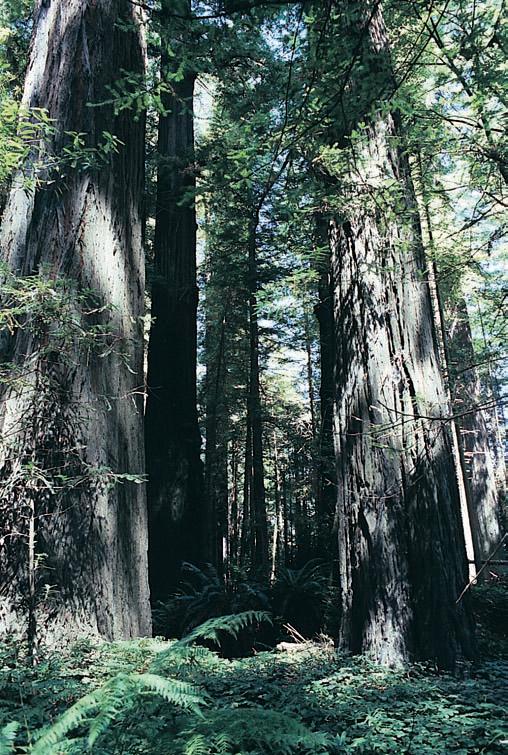
It has been estimated that the total human population of the world was less than 20 million in 6000 b.c. During the next 7,750 years, it rose to 500 million; by 1850, it had doubled to 1 billion; and 70 years later, it had doubled again to 2 billion. The 4.48-billion mark was reached in 1980, and within 5 years it had grown to 4.89 billion. In 2011, the human population size reached a milestone, exceeding 7 billion people. The earth remains constant in size, but the human population continues to grow.
In feeding, clothing, and housing ourselves, we have had a major impact on our environment. We have drained wetlands and cleared natural vegetation from vast areas of land. California, for example, now has less than 5% of the wetland it had 100 years ago. We have dumped wastes and other pollutants into our waters and added pollutants to the atmosphere. We have killed pests and plant disease organisms with poisons. These poisons have also killed natural
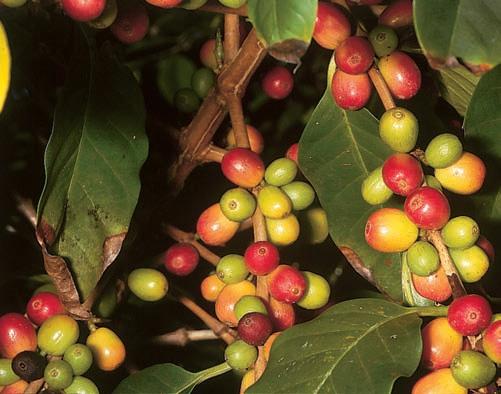

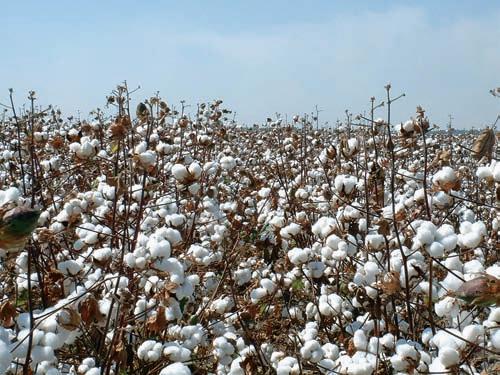
plants. The white fibers, in which seeds are embedded, are the source of textiles and fabrics. The seeds are the source of vegetable oils used in margarine and shortening. After the oils have been extracted, the remaining “cotton cake” is used for cattle feed.
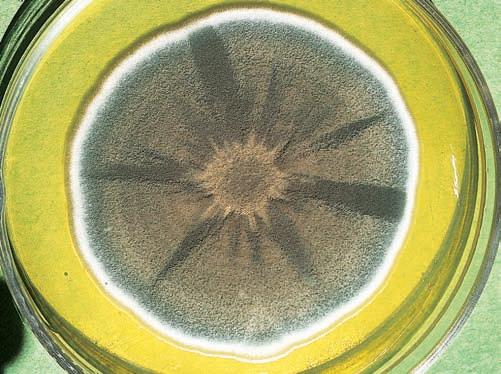
travelers. Other wastes are recycled by different microscopic organisms. When this self-supporting arrangement, called a closed system, is perfected, the range of spacecraft should greatly increase because heavy oxygen tanks will not be necessary, and the amount of food reserves will be reduced.
Today, teams of botanists, anthropologists, and medical doctors are interviewing medical practitioners and herbal healers in remote tropical regions and taking notes on various uses of plants by the local inhabitants. These scientists are doing so in the hope of preserving at least some plants with potential for contributions to modern civilization before disruption of their habitats results in their extinction.

crime was committed. The anatomy of leaves, stems, and other plant parts is used to unravel and sort out relationships among plants. A form of plant anatomy, known as paleobotany, involves the study of plant fossils.
Plant physiology, which is concerned with plant function, was established by J. B. van Helmont (1577–1644), a Flemish physician and chemist, who was the first to demonstrate that plants do not have the same nutritional needs as animals. In a classic experiment, van Helmont planted a willow branch weighing 5 pounds in an earthenware tub filled with 90.7 kilograms (200 pounds) of dry soil. He covered the soil to prevent dust from settling on it from the air. The willow produced roots and grew, and after 5 years, he reweighed the willow and the soil. He found that the soil weighed only 56.7 grams (2 ounces), less than it had at the beginning of the experiment, but that the willow had gained 76.7 kilograms (169 pounds). He concluded that the tree had added to its bulk and size from the water it had absorbed. We know now that most of the weight came as a result of photosynthetic activity (discussed in Chapter 10), but van Helmont deserves credit for landmark experimentation in plant physiology.
Modern plant physiologists use cloned genes (units of heredity that are found mostly within the nuclei of cells) to learn in precise detail much more about plant functions, including how plants conduct materials internally; how temperature, light, and water are involved in growth; why plants flower; and how plant growth regulatory substances are produced, to mention just a few.
During past centuries, Europeans who explored other continents took large numbers of plants back home with them, and it soon became clear to those working with the plants that some sort of formalized system was necessary just to keep the collections straight. Several plant taxonomists (botanists who specialize in the identifying, naming,
and classifying of plants) proposed ways of accomplishing this, but we owe much of our present system of naming and classifying plants to the Swedish botanist Carolus Linnaeus (1707–1778) (see Fig. 16.2).
Plant taxonomy involves describing, naming, and classifying organisms. Plant systematics is a related field but is broader than taxonomy. It is the science of developing methods for grouping organisms. Plant taxonomy is the oldest branch of plant study, begun in antiquity, but Linnaeus did more for the field than any other person in history. Thousands of plant names in use today are those originally recorded in Linnaeus’s book Species Plantarum, published in 1753. An expanded account of Linnaeus and his system of classification is given in Chapter 16.
There are still thousands of plants, fungi, and other organisms that have not yet been described or even discovered. Although it obviously is already too late to identify species that were not described before they became extinct, plant taxonomists around the world have united to try to identify and describe as many new organisms as possible— many with food, medicinal, and other useful potential— before much more of their natural habitat disappears. Other plant taxonomists, through the use of cladistics (analysis of shared features) and molecular techniques, are refining our knowledge of plant relationships. By the year 2000 we had acquired so much new information about natural relationships that some major reclassification took place (see Chapter 16). The molecular knowledge and techniques are also contributing to the improvement of many of our food crops, although some of the changes are controversial.
Many plant taxonomists specialize in certain groups of plants. For example, pteridologists specialize in the study of ferns; bryologists study mosses and plants with similar life cycles.
The discipline of plant geography, the study of how and why plants are distributed where they are, did not develop until the 19th century (Fig. 1.11). The allied field of plant ecology, which is the study of the interaction of plants with one another and with their environment, also developed in the 19th century.
After the publication in 1962 of a best-seller entitled Silent Spring (authored by Rachel Carson), public awareness of the field of ecology as a whole increased considerably. In this book, based on more than 4 years of literature research, Carson noted that more than 500 new toxic chemicals are put to use annually as pesticides in the United States alone, and she detailed how these chemicals and other pollutants are having a negative impact on all facets of human life and the environment.
The study of the form and structure of plants, plant morphology, was developed during the 19th century, and during the 20th century much of our basic knowledge about the form and life cycles of plants was incorporated into the plant sciences as we know them today. During this time, the number of scientists engaged in investigating plants also greatly increased. Genetics, the science of heredity, was founded by the Austrian monk Gregor Mendel (1822–1884), who performed
1. Why do some plants produce poisons, while others are edible and useful? Why are some plants carnivorous? How and why do plants respond to their environment? What is the future of tropical rain forests? What can be done about global warming and other environmental problems? This book addresses these questions and more about plants.
2. Human populations have increased dramatically in the past few centuries, and the disruption of the balance of nature by the activities directly or indirectly associated with the feeding, clothing, and housing of billions of people threatens the survival of not only humans but other organisms as well.
3. We are totally dependent on green organisms because they alone can convert the sun’s energy into forms that are usable by, and vital to the very existence of, animal life.
4. We largely take plants and plant products for granted. Animals, animal products, many luxuries and condiments, and other useful substances such as fibers, lumber, coal, medicines, and drugs either depend on plants or are produced by them.
5. To ensure human survival, all persons soon may need to acquire some knowledge of plants and how to use them. Plants will undoubtedly play a vital role in space exploration as portable oxygen generators.
6. Teams of scientists are interviewing medical practitioners and herbal healers in the tropics to locate little-known plants used by local inhabitants before the plants become extinct.
7. Botany, the study of plants, apparently began with Stone Age peoples’ practical uses of plants. Eventually, botany became a science as intellectual curiosity about plants arose.
8. A science involves the observation, recording, organization, and classification of facts. The verifying or discarding of facts is done chiefly from known samples. The scientific method involves following a routine series of steps and generally assuming and testing hypotheses.
9. The microscope has had a profound effect on studies in the biological sciences and led to the discovery of cells.
10. Plant anatomy and plant physiology developed during the 17th century. J. B. van Helmont was the first to demonstrate that plants have nutritional needs different from those of animals. During the 17th century, Europeans engaged in botanical exploration on other continents and took plants back to Europe.
11. During the 18th century, Linnaeus produced the elements of a system of naming and classifying plants. In recent years, molecular and cladistical investigations have resulted in modifications of Linnaeus’s system.
12. During the 19th century, plant ecology, plant geography, and plant morphology developed, and by the beginning of the 20th century, genetics and cell biology became established. Much remains yet to be discovered and investigated.
1. How and to what extent have humans affected their natural environment?
2. What is meant by the scientific method?
3. To what extent is animal life dependent on green organisms for its existence?
4. In terms of biological experiments, what are hypotheses and controls?
5. What is the oldest branch of botany, and why did it precede other branches?
6. What are the basic features of each of the other branches of botany?
1. Since humans survived on wild plants for thousands of years, might it be desirable to return to that practice?
2. What factors are involved in determining if and when humans might not be able to sustain themselves on this planet?
3. How do you suppose that Stone Age peoples discovered medicinal uses for plants?
4. Why do you suppose that many of the early botanists were also medical doctors?
5. Consider the following hypothesis: “The majority of mushrooms that grow in grassy areas are not poisonous.” How could you go about testing this hypothesis scientifically?
Capon, B. 2010. Botany for gardeners. 3d ed. Portland, OR: Timber Press.
Carson, R. L. 2002. Silent spring. Boston: Houghton Mifflin Harcourt.
Coyle, H. M. 2004. Forensic botany. New York: Taylor and Francis.


This chapter begins with a discussion of the attributes of living organisms. These include growth, reproduction, response to stimuli, metabolism, movement, complexity of organization, and adaptation to the environment. Then it examines the chemical and physical bases of life. A brief look at the elements and their atoms is followed by a discussion of compounds, molecules, valence, bonds, ions, acids, bases, and salts. Forms of energy and the chemical components of cells are examined next. The chapter concludes with an introduction to macromolecules: carbohydrates, lipids, proteins, and nucleic acids.
1. List the attributes of living organisms.
2. Define matter and describe its basic state.
3. Describe the features of compounds, acids, bases, and salts.
Have you ever dropped a pellet of dry ice (frozen carbon dioxide) into a pan of water and watched what happens? The solid pellet darts randomly on the surface, looking like a highly energetic water bug, as the warmer water rapidly converts it to a gas. Does all that motion make the dry ice alive? No, although one of the attributes of living things is the capacity to move. But if living things can move, what about plants? If a tree is not able to crawl down the sidewalk, does that mean it isn’t alive? Again the answer is no, but these questions do point out some of the difficulties encountered in defining life. In fact, some argue that there is no such thing as life—only living organisms— and that life is a concept based on the collective attributes of living organisms.
The activities of living organisms originate in tiny structural units called cells, which consist of cytoplasm (a souplike fluid) bounded by a very thin membrane. All living cells contain genetic material that controls their development and activities. In the cells of most organisms, this genetic material, known as DNA (deoxyribonucleic acid), is housed in a spherical structure called the nucleus, which is suspended in the cytoplasm. In bacteria, however, the DNA is distributed directly in the cytoplasm. The cells of plants, algae, fungi, and many simpler organisms have a cell wall outside of the membrane that bounds the cytoplasm. The cell wall provides support and rigidity. Cells are discussed in more detail in Chapter 3.

4. Describe the various forms of energy.
5. List the chemical elements found in cells.
6. Describe the main properties and functions of carbohydrates, lipids, proteins, and nucleic acids.
Some have described growth as simply an increase in mass (a body of matter—the basic “stuff” of the universe), usually accompanied by an increase in volume. Most growth results from the production of new cells and includes variations in form—some the result of inheritance, some the result of response to the environment. If you plant two varieties of tulips near each other and grow them under identical conditions, they are likely to differ in size, color, and other characteristics due to differences in genetic makeup. On the other hand, if you plant bulbs of the same variety next to each other, they may also look different from each other, especially if you treat them differently. That is, they are exposed to different environments. If you water one just enough to allow it to grow, while you water the other one freely and work fertilizers and conditioners into the soil around it, you might expect the second one to grow larger and produce more flowers than the first. Growth pattern, therefore, is controlled by both a plant’s genetic makeup and the environment in which it is grown. Various aspects of growth are discussed in Chapter 11.
Dinosaurs were abundant 160 million years ago, but none exist today. Hundreds of mammals, birds, reptiles, plants, and other organisms are now listed as endangered or threatened species, and many of them will become extinct within the next decade or two. All of these once-living or currently threatened organisms have one feature in common: it became impossible or it has become difficult for them to reproduce. Reproduction is such an obvious feature of living organisms that we take it for granted—until it no longer takes place. When organisms reproduce, the offspring always resemble the parents: guppies never have puppies—just more guppies—and a petunia seed, when planted, will
not develop into a pineapple plant. Also, offspring tend to resemble their parents more than they do other individuals of the same kind. The laws governing these aspects of inheritance are discussed in Chapter 13.
If you stick a pin into a pillow, you certainly don’t expect any reaction from the pillow, but if you stick the same pin into a friend, you know your friend will react immediately, because responding to stimuli is a major characteristic of all living things. You might argue, however, that when you stuck a pin into your house plant, nothing happened, even though you were fairly certain the plant was alive. You might not have been aware that the house plant did indeed respond, but in a manner very different from that of a human. Plant responses to stimuli are generally of a different nature than those of animals. If the house plant’s food-conducting tissue was pierced, it probably responded by producing a plugging substance called callose in the affected cells. Some studies have shown that callose may form within as little as 5 seconds after wounding. Also, an unorganized tissue called callus, which forms much more slowly, may be produced at the site of the wound. Responses of plants to injury and to other stimuli, such as light, temperature, and gravity, are discussed in Chapters 9 through 11.
Metabolism is the collective product of all the biochemical reactions taking place within an organism. All living organisms undergo metabolic activities, which include the production of new cytoplasm, the repair of damage, and normal cell maintenance. The most important activities include respiration, an energy-releasing process that takes place in all living things; photosynthesis, an energy-harnessing process in green cells that is, in turn, associated with energy storage; digestion, the conversion of large or insoluble food molecules to smaller soluble ones; and assimilation, the conversion of raw materials into cytoplasm and other cell substances. These topics are discussed in Chapters 9 through 11.
At the beginning of this chapter, we mentioned that plants generally don’t move from one place to another (although their reproductive cells may do so). This does not mean, however, that plants do not exhibit movement, a universal characteristic of living things. The leaves of sensitive plants (Mimosa pudica) fold within seconds after being disturbed or subjected to sudden environmental changes, and the tiny underwater traps of bladderworts (Utricularia) snap shut in less than one-hundredth of a second. But most plant movements, when compared with those of animals, are slow and imperceptible and are mostly related to growth phenomena. They become obvious only when demonstrated experimentally or when shown by time-lapse photography. Time-lapse photography often reveals many
types and directions of motion, particularly in young organs. Movement is not confined to the organism as a whole but occurs at the cellular level. For example, the cytoplasm of living cells constantly flows like a river within cells; this streaming motion is called cyclosis, or cytoplasmic streaming. Cyclosis usually appears to run clockwise or counterclockwise within the boundaries of each cell, but movement is not limited to a circular pattern.
The cells of living organisms are composed of large numbers of molecules (the smallest unit of an element or compound retaining its own identity). Even the most complex nonliving object has only a tiny fraction of the types of molecules of the simplest living organism. Typically there are more than 1 trillion molecules in a single cell. The molecules are not simply mixed, like the ingredients of a cake or the concrete in a sidewalk, but are organized into compartments, membranes, and other structures within cells. Furthermore, the arrangements of these molecules in living organisms are highly structured and complex. Bacteria, for example, are considered to have the simplest cells known, yet each cell contains a minimum of 600 different kinds of protein as well as hundreds of other substances, with each component playing an important role in the function of the cell. When flowering plants and other larger living objects are examined, the complexity of organization is overwhelming, and the number of molecule types can run into the millions.
If you move a rock from a cold mountain to a warm desert, the structure of that rock will not change in response to its new environment. Living organisms, however, do respond to the air, light, water, and soil of their environment, as will be explained in later chapters. They are also, after countless generations of natural selection (as discussed in Chapter 15), genetically adapted to their environment in many subtle ways. Some weeds (e.g., dandelions) can thrive in a wide variety of soils and climates, whereas many species now threatened with extinction have adaptations to their environment that are so specific they cannot tolerate even relatively minor changes.
The basic “stuff of the universe,” called matter, occurs in three states—solid, liquid, and gas. In simple terms, matter’s characteristics are as follows:
1. It occupies space.
2. It has mass, which we commonly associate with weight.